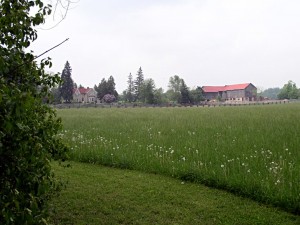CALEDON ROCKFORT OMB DECISION
 Key Issues: Water/hydrogeology; Adaptive Management Plan with future decisions made by MNR; significant Natural Heritage features and functions; cold water fishery and endangered species, Cultural Heritage impacts, social impacts, noise impacts, visual Impacts, truck haul route; Caledon’s OPA 161 requirements for aggregate extraction; striking a balance between resource extraction and the protection of the ecosystem and community impacts; absence of fiscal agreements for costs, risks and uncertainties.
Key Issues: Water/hydrogeology; Adaptive Management Plan with future decisions made by MNR; significant Natural Heritage features and functions; cold water fishery and endangered species, Cultural Heritage impacts, social impacts, noise impacts, visual Impacts, truck haul route; Caledon’s OPA 161 requirements for aggregate extraction; striking a balance between resource extraction and the protection of the ecosystem and community impacts; absence of fiscal agreements for costs, risks and uncertainties.
Key Factor: The Coalition of Concerned Citizens, a committed and tenacious local community group with over 5,000 supporters, played a key role for the entire 13 year struggle of this proposal. They were a potent force raising awareness of all the local issues and concerns surrounding the application. They met every Sunday for 13 years to meet the many challenges.
In 1997 James Dick Construction Ltd (JDCL) informed the Caledon community that they planned to mine dolostone up to 100 feet below the water table in an environmentally significant watershed area. The Coalition of Concerned Citizens was formed locally to raise awareness of the relevant issues and communicate them to governments at all levels. At the same time, The Town of Caledon and the Region of Peel had started to update their aggregate policies. These policies were not finalized until 2003. JDCL submitted its application in 1998 and decided to wait until a number of planning policies were sorted out, before formally moving their appeal forward at the OMB. In 2003 the OMB found that the JDCL application would not be grandfathered under the old rules, but would be heard under Caledon’s new aggregate policy OPA 161. This was a precedent setting decision. It would be 5 more years before JDCL had completed the broader environmental studies required under OPA 161. After further delays because of outstanding studies on water and other matters, the final OMB hearing began in September of 2009 and convened for 8 months until May 2010. The final decision was announced in November of 2010.
The Coalition dedicated many of its resources during the 13 years to communications and fundraising. It placed a high priority in being professional and credible—and so hired legal advice, court reporters, expert witnesses, and drew on extensive local knowledge. They were going to see it through come hell or high water. Communication tools went all the way from stuffing mailboxes, to sending out press releases and e-blasts, besides maintaining a multi-page website. Fundraising went from garage sales to theatre nights, golf tournaments to ho-downs. PowerPoint presentations to many different groups were made and media coverage was an essential aspect of raising awareness of the risks involved.
In the end, the OMB denied the application. Read the decision below:
Links / references:
